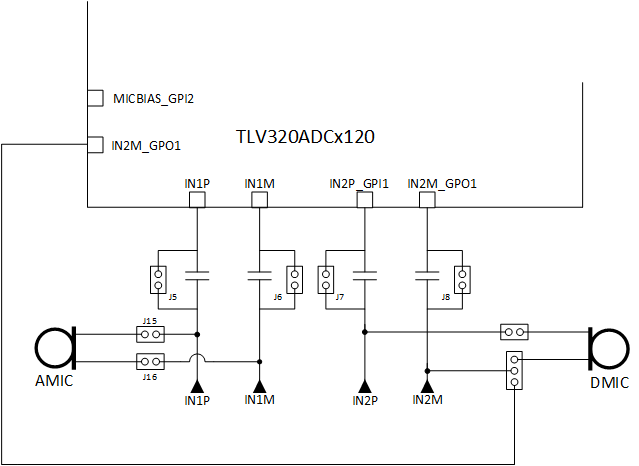SBAU359A May 2019 – June 2021
2.2 ADCx120EVM-PDK Hardware Settings
The TLV320ADCx120 evaluation module has several input configuration options and offers extensive flexibility to allow the user to evaluate the device across multiple operation modes. The different operation modes are highlighted in this section. The INxP and INxM pins of the TLV320ADCx120 can optionally connect to onboard microphones for quick evaluation, and can be optionally configured to bypass the input decoupling capacitors for evaluating the functionality of digital microphones, GPIOs, or in DC coupled applications. Figure 2-7 shows a diagram of the EVM input architecture.
 Figure 2-7 TLV320ADCx120EVB Input
Architecture
Figure 2-7 TLV320ADCx120EVB Input
Architecture